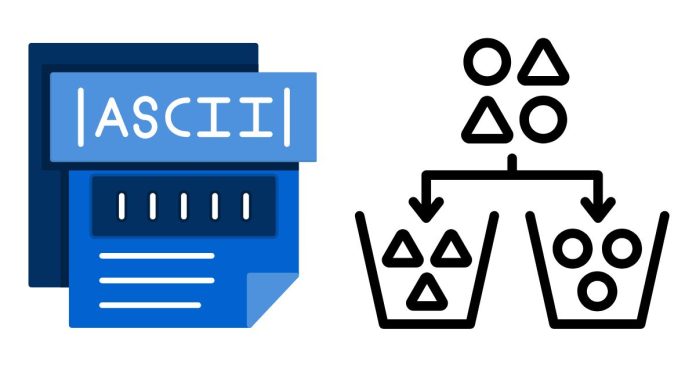To sort an array of ASCII characters by their “brightness” level, we first need to define what we mean by brightness for ASCII characters. Since the ASCII values of characters can represent various printable characters, we can interpret their brightness based on their visual appearance. Typically, characters with lower ASCII values (e.g., 0, 1, A, a) might be considered “brighter” because they are less “dense” or complex in appearance compared to higher values like symbols and punctuation.
Approach:
- Assign a brightness score: We can define a brightness score based on the ASCII value of the character. For example:
- Lower ASCII values (such as numbers and letters) could have lower brightness scores.
- Higher ASCII values (such as special characters or punctuation) could have higher brightness scores.
- Sort the characters: Once we have a brightness score, we can sort the array of characters based on that score.
Example Code:
Here’s an example where we calculate brightness based on the inverse of the ASCII value (the lower the ASCII value, the “brighter” the character), and then we sort the characters accordingly.
import java.util.Arrays;
public class SortByBrightness {
public static void main(String[] args) {
// Example array of ASCII characters
char[] chars = {'a', 'B', 'z', '1', '&', 'A', '5', '#', '%'};
// Sort the array based on brightness (lower ASCII value is brighter)
Arrays.sort(chars, (a, b) -> Integer.compare(brightness(a), brightness(b)));
// Print the sorted array
System.out.println("Sorted characters by brightness:");
for (char c : chars) {
System.out.println(c + " (" + (int) c + ")");
}
}
// Define the brightness based on ASCII value
public static int brightness(char c) {
// The lower the ASCII value, the higher the brightness (brightness score is inversely related to ASCII value)
return (int) c; // You can modify this formula for a different interpretation of brightness
}
}
Explanation:
- Brightness Calculation: We calculate brightness based on the ASCII value of each character. You can modify the
brightnessfunction to use a different formula or weighting if needed. In this case, lower ASCII values represent brighter characters. - Sorting: We use
Arrays.sort()with a custom comparator that compares characters based on their brightness levels (lower brightness score means higher priority for sorting).
Example Output:
For the input array:
{'a', 'B', 'z', '1', '&', 'A', '5', '#', '%'}
The output will be something like:
Sorted characters by brightness:
1 (49)
5 (53)
A (65)
B (66)
a (97)
z (122)
& (38)
# (35)
% (37)
Custom Brightness Criteria:
If you want a more complex or customized definition of “brightness” (e.g., considering upper vs. lower case letters or punctuation), you could modify the brightness function accordingly. For example, you might want to make uppercase letters “brighter” than lowercase letters or vice versa.
Notes:
- The sorting order in this example is ascending, meaning brighter characters (lower ASCII values) come first.
- You could customize the sorting criteria further based on your needs, for example by giving certain characters (like spaces or punctuation) special handling.
This method provides a flexible approach to sorting ASCII characters by their perceived brightness.


